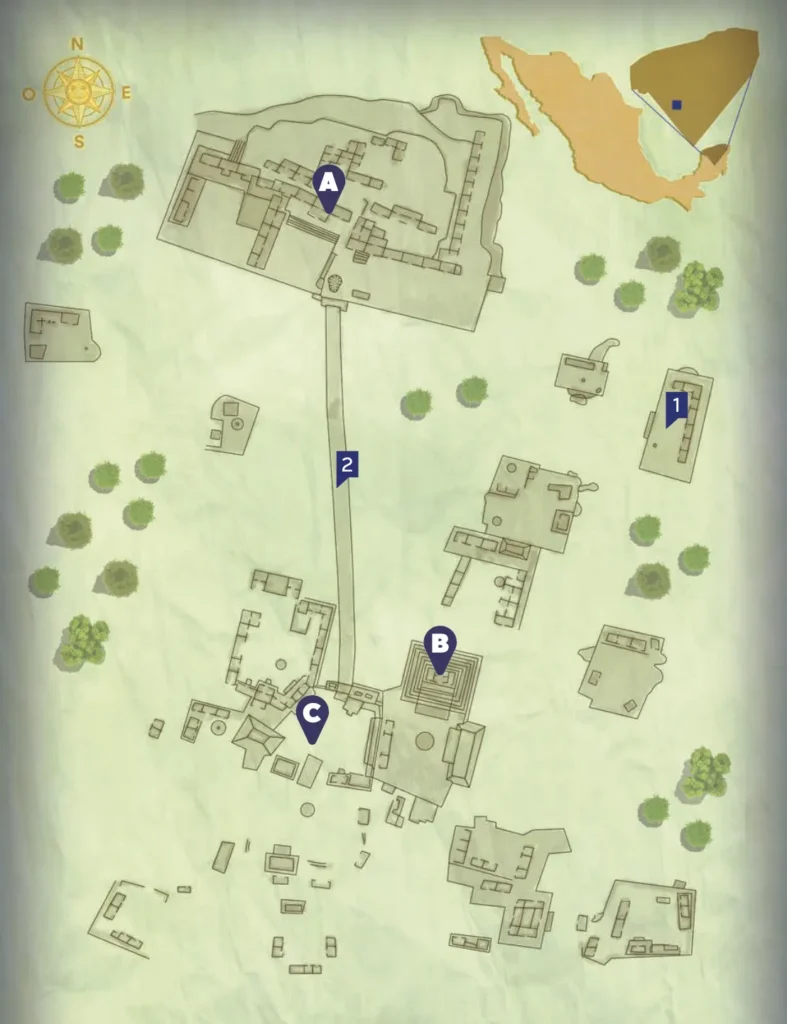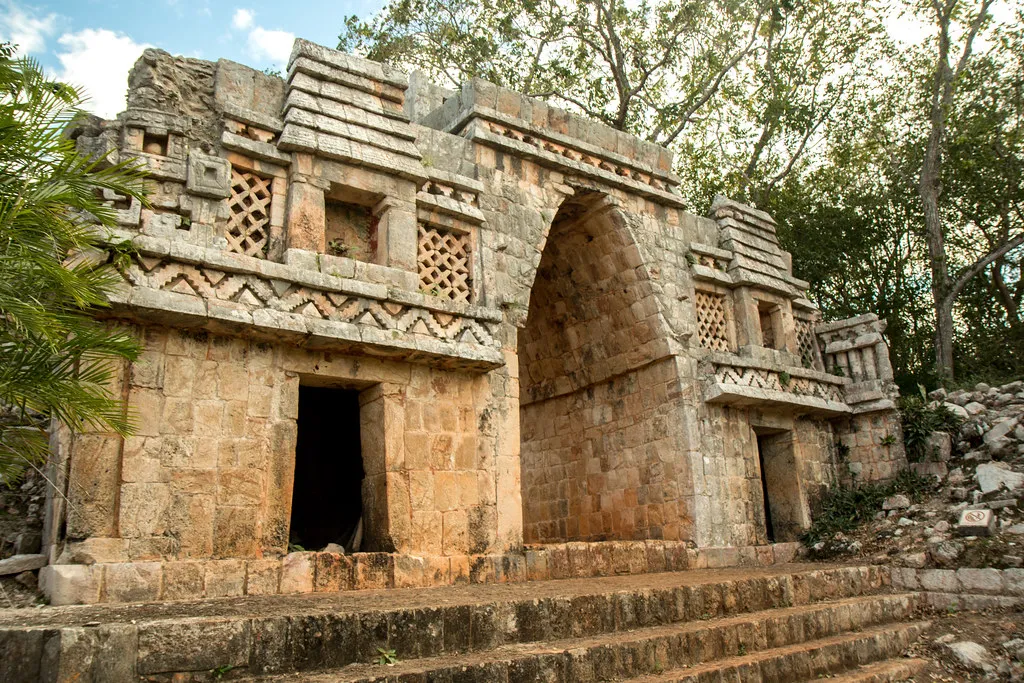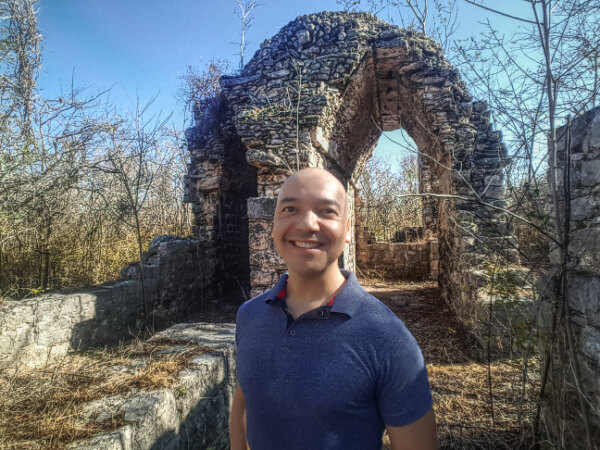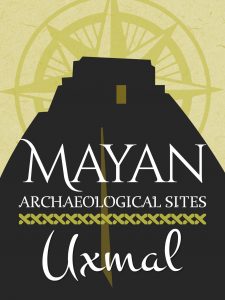In the heart of Yucatán, Mexico, lies the ancient Maya city of Labná, Meaning “Old House” in Mayan. This site whispers tales of a vibrant past and showcases the architectural prowess of the Puuc region.
Labná Archaeological Site map

A. El Palacio
B. El Mirador
C. El Arco
Other structures
1 Templo de las Columnas
2 Sacbé
Labná’s history
Labná’s history spans centuries, with evidence pointing to two significant periods of occupation. The earliest traces of human presence are concentrated in the southern part of the city, where structures like El Mirador and the Plaza Principal stand as testaments to this era. Later, during the 8th and 10th centuries AD, Labná underwent a transformation, taking on its present form. This period saw the construction of many of the city’s remarkable buildings, including El Arco and El Palacio, the latter of which housed the ruling elite and served as the administrative and religious center.
Labná Archaeological Site

Labná’s architectural style aligns with the broader trends of the Puuc region, showcasing the evolution of architectural designs across different periods. El Mirador, with its smooth façades and a high crest adorned with stucco decorations, embodies an early phase of the Puuc style. On the other hand, El Arco and El Palacio exemplify a later phase known as the mosaic style, characterized by intricate details like Chaak masks, thatched houses, anthropomorphic sculptures, and stepped frets.

One of the most intriguing aspects of this Mayan archaeological site is the presence of “towers” similar to those found in the Chenes region. Positioned at the northern gateway to the Plaza Principal, these structures are believed to symbolize Wakah Chan, the cosmic tree at the center of the world, as per interpretations based on their stucco decorations.
El Palacio, perched atop the highest point in the valley, is a testament to it’s architectural grandeur. This complex comprises at least seven buildings spread across two levels, reflecting the city’s sophisticated urban planning and architectural ingenuity.
There are around 60 chultunes in the city center. These bottle-shaped subterranean chambers, characteristic of Mayan architecture, were used to collect and store rainwater, demonstrating the Maya’s resourcefulness and adaptation to the environment.
Interestingly, El Arco, one of this site’s iconic structures, found its way onto the one-peso gold certificates issued by the Constitutionalist Government of Yucatán in 1916, showcasing its historical significance.
As in many other Mayan cities, phallic imagery is a recurring theme in Labná’s art, often linked to fertility and abundance.
How to get to Labná
For those eager to retrace the steps of the Maya, you can get there via Highway 261 from Mérida towards Campeche. Upon reaching the intersection, take Highway 31, known as the Ruta Puuc. Located a mere 9 km from Sayil, it’s opened daily from 8:00 am to 5:00 pm, offering a glimpse into a magnificent past.












